 The second day of hearings on the Kings River Fully Appropriated Status began at 9:00am on Thursday June 3, 2021 on Zoom from Sacramento. This morning Kenneth Petruzzelli, an enforcer for the State Water Resources Control Board was present as well as Damon Hess. They were introduced by Nicole Kuenzi Hearing Officer, as present.
The second day of hearings on the Kings River Fully Appropriated Status began at 9:00am on Thursday June 3, 2021 on Zoom from Sacramento. This morning Kenneth Petruzzelli, an enforcer for the State Water Resources Control Board was present as well as Damon Hess. They were introduced by Nicole Kuenzi Hearing Officer, as present.
The Meeting
Attorney for Alta, Consolidated and Fresno IDs (Upper River Districts) Nick Jacobs began by questioning Hess. Hess identified himself as a Water Resources Engineer in the State Water Board’s enforcement division. Attorney for Semitropic Water Storage District Kevin O’Brien objected to having Hess testify and Attorney for Kings River Water Association Leonard Herr (Herr kept calling Kuenzi “your honor” and it seemed an honest mistake) suggested Hess be sworn in. A hiccup in the proceedings but soon corrected.
Jacobs started in by questioning Hess about correspondence between him and O’Brien’s legal partner Sam Bivins. The email stated in Hess’ opinion Semitropic’s complaint isn’t up to snuff – it doesn’t spell out the terms and conditions that show a misuse of water or harm to Semitropic. Hess agreed that was his opinion. Semitropic’s Bivins wrote back saying he believes it does have the needed information in its complaint and will not amend its complaint.
O’Brien then questioned Hess asking if he believes this meeting should be taking place and Hess said no. Hess was asked if he had shared that opinion with anyone at work and Hess said he spoke to his superior. O’Brien asked Hess if he’d looked at the licenses in question and asked if usage of water is relevant to determining if the supply has been forfeited. Hess said sometimes and O’Brien challenged him. Hess said it depends on whether or not the water is available to use.
Attorney for Tulare Lake Basin Water District Peter Kiel asked Hess about a document known as TLBWD Exhibit 35 about pumping water from one area and moving it to Semitropic. There was a pause because Kuenzi wanted everyone to be able to see the document which looked like a graphic from a Bakersfield Californian story. It showed a possible water transfer from Pixley, Alpaugh and Atwell Island IDs to Angiola ID. Then to a storage area near Kettleman City and from there to the California Aqueduct and moved to Semitropic. The caption on the map mentioned John Vidovich as the power behind this transfer and I think cast things in a nefarious light.
Kiel asked Hess if he’d spoke with KRWA and O’Brien objected on grounds of relevance but Kuenzi allowed after questioning Kiel. That question had to do with some prehearing ruling that flew over my head. Kiel kept trying to bring up another license under dispute – one could believe it deals with the transfer in the newspaper graphic. That kind of brought the questioning of Hess to a halt. Petruzzelli asked if there was any reason to call Hess back and Kuenzi dismissed Hess.
More Exhibits
Kuenzi said she received a list of objections to Semitropic’s evidentiary exhibits. She made some longer term plans on how to deal with the exhibits. O’Brien said he’d like to remove the exhibits stricken from the record, the first 10. Some of Dr. David Sunding’s written testimony was stricken and O’Brien was OK with excluding and not arguing over those exhibits.
Kuenzi said she’ll identify all the exhibits but for the ones O’Brien just mentioned and everyone will have a chance to support or oppose the inclusion of the exhibit.
A portion of yesterday’s witness for Semitropic Dr. Ali Taghavi testimony was the first one on the chopping block. Herr said Taghavi used a model to form his opinions and that model was not available to KRWA for inspection. Kuenzi said the model belongs to the Kings River Conservation District and doesn’t KRWA have access to the model? Herr said yes (KRCD and KRWA share offices) but the model wasn’t presented and that was the problem. Attorney for the Upper River Districts Michelle Chester spoke up siding with Herr.
O’Brien said the testimony has been out there and they could have asked at any time to get access to the model. He said he’s never seen a model put into the record, just the model’s results.
Kuenzi sided with Semitropic as the model was available, Taghavi was available for questions and the information the model provided will be allowed for the time being.
Yesterday an engineer Polly Boissevain gave testimony of a technical nature that was challenged on the basis of outdated data. Herr said an inadequate foundation was laid for the accuracy of the data. Chester said there is ample updated data available to apply here.
O’Brien said this objection brings to mind the word audacity. He said the reports containing the latest data was filed the day before the deadline of this hearing. He said Semitropic didn’t get the data until the day after it was admissible. He said if this was a federal court he’d file for sanctions.
Kuenzi sided with Semitropic on this one and will allow Boissevain’s testimony. Kuenzi said but for that which has already been dismissed the Semitropic evidence will be allowed. She said the exhibit that came in from TLBWD will be looked at after lunch.
KRWA Testimony
Kuenzi asked the KRWA to start its testimony. Herr was the spokesman for this and he thanked Kuenzi, Bivins and O’Brien for the hard work and professionalism they’ve all shown. He said if you look at Semitropic’s story you’ll see omissions that prevent telling the full story. The interactions between KRWA member units, the Army Corps of Engineers and other public entities are not considered in Semitropic’s claim.
Herr said there are decades of compliance to contracts and working with ACE and Semitropic doesn’t show any problems over the years. There’s a record of decades of safety and compliance with the State Board. In one instance Semitropic complained once about reports not being extensive enough. That information was compiled and made available but it took a while and wasn’t denied as a strategy. He said if Semitropic has a problem with the information provided by ACE it needs to take it up with ACE. I’m reading between the lines here so take it for what it’s worth but ACE’s reputation for speedy response to anything nonmilitary is neck and neck with the US Postal Service.
Herr said ACE’s input in flood releases far outweighs KRWA’s control. KRWA membership has 15 public and almost as many private entities. KRWA’s role is determined by contractual obligations to deliver water to member units who then determine the use of the water. KRWA also has the electrical power plant at Pine Flat Dam. Herr said testimony from yesterday’s witness Dr. Douglas Littlefield didn’t provide specificity. He said Littlefield relied on newspaper stories instead of published work by recognized experts like James Provost and Randy McFarland. Herr said most of Semitropic’s testimony was short on specifics and didn’t accurately show KRWA’s role in the Kings River system. That was KRWA’s opening statement and Kuenzi called for a short break.
KRWA Witness
Herr said he intends to call Steve Haugen, Kings River Water Master and General Manager of KRWA. Kuenzi swore him in and Herr said he didn’t want to rehash the written testimony. Kuenzi said it would be appropriate to summarize written testimony but questioning must follow that testimony.
KRWA Exhibit 6 was put on the screen and it was Haugen’s written declaration. Haugen explained as Kings River Watermaster and GM of KRWA he has a small staff that works with the member agencies that have their own GMs and staff. He works with PG&E that has storage on the Kings River upstream from Pine Flat Dam. KRWA receives water orders around the clock, all year long. There are more than 60 diversion points from as short as two hours to five days away from Pine Flat Dam. When there is a flood release ACE sets the diversion at Crescent Weir and the other 15 weirs along the system. KRWA has to have manpower at these critical points. KRWA has to deal with channel loss and account for it. Each diverter is charged with the losses.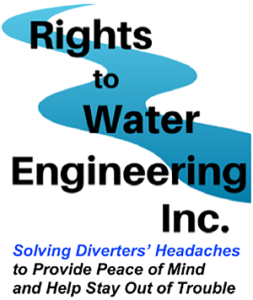
Bivins objected that Haugen has exceeded his written testimony. Herr said the testimony is relevant and on page eight of Haugen’s testimony channel losses are mentioned. Kuenzi asked about the objection and Bivins said the detail of channel losses is beyond the scope. Kuenzi agreed and struck that part of Haugen’s testimony and asked Haugen to be careful on the detail.
Herr apologized saying he thought Haugen was going to be allowed to explain the terms used in the testimony. Kuenzi said the specific numbers should have been included in the original testimony so they could be reviewed in advance.
Herr asked Haugen how he deals with channel loss and right at that time Haugen’s computer camera shut down. He had to reboot. Here’s a note about Sam Bivins, his computer camera was working and he’s sitting in a room with a light blue wall behind him. He doesn’t move much. The eyes of most mammals mine catch movement and I thought he was posting a photo until I saw him blink. That was yesterday and while I might be wrong I’d say that man has focus and a cool demeanor under pressure. He would have made a good candidate for one of those attorneys who advertise on billboards. Not that he or his firm would advertise. But he does come across as having it together. Herr on the other hand strikes me as being more fun to get stuck with on a long car ride. During this pause it was also said the YouTube broadcast was down. I had kept a YouTube screen up without volume and when I checked it was gone and I’ve not been able to get it back up.
other hand strikes me as being more fun to get stuck with on a long car ride. During this pause it was also said the YouTube broadcast was down. I had kept a YouTube screen up without volume and when I checked it was gone and I’ve not been able to get it back up.
Anyway, Haugen resumed by telephone and a chart showing channel loss throughout the system was posted. Some of the furthest downstream points of diversion can lose half of the water sent to them due to percolation in a sandy channel. Haugen said the supplies are sent down a natural river channel. Below Pine Flat the stream bed is cobbled rock but as you go further downstream it becomes sandy, which doesn’t hold water as well as a different soil type such as clay.
Cross Exam
Bivins got to question Haugen and asked him to read from his testimony. It stated KWRA reporting has never been questioned by the State Board or anyone else before this “attack” by Semitropic. Bivin asked if Haugen recalls ever having anyone question or complain about either of the licenses in question. He didn’t remember such a thing.
Bivins had an exhibition posted from the State Board showing KRWA contracted with the State Board to analyze claims to pre-1914 appropriative water rights. Haugen said Jim Provost of Provost & Pritchard was instrumental in providing the State Board information for this study. Bivins asked if P&P Engineer Kevin Johansen worked on this and Haugen didn’t remember.
Bivins had Haugen read from the same document. The passage said based on 2011 data KRWA appears to have violated the combined appropriative/pre-1914 limitation on Licenses 11518 and 11519. Further it stated KRWA didn’t exercise a significant portion of direct diversions of limits of Licenses 11517 and 11521 covering the Tulare Lake Basin. I believe this refers to the amended information that was made available so close to the deadline.
Bivins asked when Haugen first learned about Semitropic’s complaint and Haugen wasn’t sure but he said about the time KRWA submitted its reply to the complaint. Haugen said it wasn’t until then the awareness of needing to amend the information was clear. At that point Ms. Kuenzi’s connection went offline. Someone from the State Board said if they can’t reconnect her in a couple of minutes there’d be a short break. Kuenzi came back within five minutes.
Kiel asked to have the court reporter Francine Dias to read it back. Also, there’s a lady named Nicole Mullen who has been posting the exhibit documents throughout the hearing. Both of these gals have been doing great work in such a timely manner. This hearing would have been on the very razor’s edge of unbearable tediousness without them. Good for them. There are times I like to praise State Board staff for being good stewards of the taxpayers’ dime.
Bivins started to ask a question that Herr objected to saying Bivins’ is conflating a draft document with a final report. Bivins asked if Haugen responded to this report and Haugen said it isn’t usual to respond to a passage in a draft document.
Bivins had a document posted with the signature page shown. Well that wasn’t enough to get an understanding so the cover page was shown. It was court case: BCV-19-100523 KRWA, TLBWSD as plaintiffs’ verses Tulare Lake Reclamation District No. 761 and Sandridge Partners L.P. as defendants. This document was a declaration of Haugen in support of an ex parte application for a temporary restraining order and preliminary injunction. There was a pause in the hearing as Bivins’ office sent a copy of the, I think 12-page document to everyone on what’s called the Service List. That list has the names and emails of attorneys, managers and interested parties participating in the hearing. Bivins said his office is having trouble emailing this document out and Kuenzi said her office is having trouble uploading it to the Hearings Document site. Eventually the email came through as did the upload to the hearing sight. Bivins said he only had two or three questions pertaining to it.
Kuenzi said from now on she’ll have her team post to the hearing site documents as soon as they could. Attorney for KRWA Joe Huges asked for more time as Herr is printing out the document.
The document was reposted and Kuenzi asked Bivins to continue. Paragraph 27 was the focus and he asked Haugen to read. It said the transfer of Kings River water outside the service area could violate the licenses and open a way for the State Board to take punitive action against KRWA and it could lose its licenses. It was made clear Haugen was only referring to the case the declaration was referring to. Bivins asked if what he said in this declaration would apply to today’s hearing. Herr objected, Kuenzi sustained and Bivin asked what the Blue Book is.
Haugen said the Blue Book is a collection of agreements between the KRWA member agencies that define the parameters of his job. It prohibits transferring water out of the Kings River place of use. Bivins had a US Bureau of Reclamation document; the final EA/IS and neg dec of Fresno ID’s Gould Canal intertie to the Friant Kern Canal. Haugen was aware of the project. Bivins asked if this project would allow Kings River water to go out of the area and therefore be a violation of the Blue Book. That raised a few objections about the legal nature of the question. Kuenzi had Haugen answer in his professional opinion and not as a lawyer and Haugen said it would have to be a case by case as there are a good number of contingencies that could influence a decision. Bivins continued asking about Kings River water being transferred outside of the area. Haugen said in rare flood occasions water has been sent into the FKC but he said that was a flood fight and not really a transfer. It is a very limited, emergency situation.
the legal nature of the question. Kuenzi had Haugen answer in his professional opinion and not as a lawyer and Haugen said it would have to be a case by case as there are a good number of contingencies that could influence a decision. Bivins continued asking about Kings River water being transferred outside of the area. Haugen said in rare flood occasions water has been sent into the FKC but he said that was a flood fight and not really a transfer. It is a very limited, emergency situation.
Bivins asked Haugen if he’d investigated if the JG Boswell Company has ever transferred water out of the service area and that brought on an objection. Kuenzi asked where Bivins was going but allowed the question. Haugen said he hadn’t done so. He asked if Haugen had personal, direct knowledge of how member units used their water in the time before he went to work at KRWA. Haugen said there is no one now employed there with that type of knowledge.
A letter from KRWA with Haugen’s signature to the State Board’s Division of Water Rights was posted. There was a document stating KRWA claims to hold pre 1914 rights. Bivins asked if this is the first such claim to pre-1914 and Haugen said there were already statements filed in the 1960s. On the form Pine Flat Dam was listed at the diversion works and onstream storage. Pine Flat Dam was completed in 1955. Bivins wanted to know how KRWA could claim pre-1914 storage on a dam that wasn’t completed until 1955. That was objected to and Bivins gave that line of questioning up. Bivins then asked if KRWA claims its pre-1914 rights allow for groundwater storage. Haugen said he’d have to leave that up to his attorney.
The next doc Bivins pulled up was a Warren Act contract between KRWA and the USBR for putting non San Joaquin River water into the FKC from the Delta Lands Reclamation District # 770 for flood control. Haugen said he believes 770 is located in the Tulare Lake Basin area. Bivins asked if this letter shows Haugen was OK with moving water out of the place of use and Haugen said this pertained to damaging flood water. Another document shows potential recipients of RD 770 floodwater that listed Semitropic. Bivins asked if Haugen investigated where the flood water could go. Haugen said he didn’t as this was a practice established well before he came onboard with KRWA.
Next Haugen’s declaration about this hearing was posted. It stated SGMA included larger irrigation and spreading demands in KRWA. And of course spreading means recharge. Bivins asked what entities would be involved in spreading. Haugen said he expects most members will be involved in spreading but he didn’t have exact knowledge of each project. Bivins asked if KRWA’s licenses authorize spreading for groundwater recharge and Haugen said he believes a State Board decision covered them. That was the end of Bivins questions.
Herr said he had some redirect questions but they shouldn’t take long as it was almost noon. He had the 2013 draft report from the State Board’s report on KRWA’s pre-1914 rights. Herr asked Haugen if he considered this a complaint by the State Board. Haugen said no, KRWA has always been responsive to State Board staff. He said this draft report didn’t register as a complaint. The final report based on this draft didn’t have any complaints. The final report was reviewed by a committee along with general counsel. Had there been anything in the final that raised to the level of a complaint it would have been addressed.
Herr asked if KRWA was aware of Semitropic’s complaint before it started amending its reports. Haugen said it was the complaint that caused the review of reports and the inclusion of additional data. There was some question by Bivins about the order of priority being allowed in testimony. Kuenzi allowed and Haugen said the order of reporting reflected the seniority of the licenses. The approach was to prioritize the six water rights licenses KRWA holds in trust for its members.
Kuenzi asked for more questions from staff and there were none. She did ask Haugen about testimony stating KRWA was unaware of other sources of water besides the Kings River available to serve Licenses 11521. He said after hesitation he was unaware of other sources recognized by that license. It wasn’t until after the complaint was filed he was aware this was a possibility. Without any complaints there was no reason to investigate that claim. Once the complaint was made KRWA looked into it and amended the situation in its filings. He said the investigation required a lot of work to pull the discovery into the license.
Kuenzi asked about putting water into the FKC and Haugen said the FKC goes under the Kings River about seven miles downstream of Pine Flat. He said there is a side channel that allows pumping into the FKC downstream on the eastside of the river. This is close to the diversion points for Consolidated and Fresno IDs. Bivins asked Haugen about flood water diversions from the Kings to the FKC and had KRWA ever filed for diversions. Haugen said no to damaging flood flows. Kuenzi said to take a break for lunch and come back at 1:17pm.
Part II of Part II
Well, we all got to grab a bite and get up off our tails and walk it off. Kuenzi started things up again at 1:20pm. KRWA’s Herr asked about an exhibit from earlier in the day presented by Semitropic or TLBWSD, I couldn’t tell which. TLBWSD’s Kiel was willing to allow the evidence. Bivin’s objected so it must have been TLBWSD’s exhibit. Bivins quoted State Board policy chapter and verse as to why it shouldn’t be allowed into the testimony. Bottom line, I’m not sure what happened but the evidence was allowed by Kuenzi. She said the document has all the markings of a State Board document whether or not it was stamped rescinded. For the record Bivins made a hearsay objection.
up again at 1:20pm. KRWA’s Herr asked about an exhibit from earlier in the day presented by Semitropic or TLBWSD, I couldn’t tell which. TLBWSD’s Kiel was willing to allow the evidence. Bivin’s objected so it must have been TLBWSD’s exhibit. Bivins quoted State Board policy chapter and verse as to why it shouldn’t be allowed into the testimony. Bottom line, I’m not sure what happened but the evidence was allowed by Kuenzi. She said the document has all the markings of a State Board document whether or not it was stamped rescinded. For the record Bivins made a hearsay objection.
The Next Witness
Provost & Pritchard’s Kevin Johansen was the next witness called by KRWA. Kuenzi swore him in. Herr asked him to give an account of himself. Johansen has prepared a declaration and stated under oath his declaration is still accurate. Herr asked him what he does for a living. Johansen said he’s been a registered engineer since 1991 and has worked at P&P for 32 years. He has been a consulting engineer for KRWA. In this capacity he helps Haugen or whoever is GM with licensing, mapping and other support services, including preparing reports. Johansen said he started working on Kings River matters since 2010 and has been the KRWA consulting engineer since 2010. He learned about the Kings River working with James Provost who was the prior CE. Provost had been working with KRWA since 1968 or so.
Herr asked Johansen what reporting entails. Johansen said historical reports involve taking into account how much water and how it is used. He was made aware of the need to amend the reports only after the Semitropic complaint against the licenses in question. He said the typical historical reporting was a simplified report that covered allocation. How the water was used by the member units was not a part of how these reports were written. Once the complaint from Semitropic was filed it was determined by KRWA Semitropic’s claim was oversimplifying matters. KRWA came back and amended the reports to include further information showing the water waste Semitropic claimed wasn’t accurate.
A KRWA exhibit was posted that showed a schematic diagram of the Kings River system. It started with Courtright and Wishon Reservoirs that lead to Pine Flat Reservoir. The releases at the dam are measured at Piedra. Between the dam a Piedra Mills and Hughes Creek empty into the river. Water past Piedra encounter People’s Weir, Island Weir and Army Weir where it then goes to either the North or South Fork of the River. On the North Fork it ends up in Mendota Pool and the San Joaquin River. The South Fork flows to the Empire Weir #2 with it either goes down the Blakeley Canal, the Tulare Lake Canal or something the maps says is Over #2 and the Tulare Lakebed.
Herr asked when Johansen first became aware of Semitropic’s complaint. Johansen said when the complaint was filed. He said it took a while to prepare the reports. Bivins objected but Kuenzi allowed the testimony. Johansen said it took a while because of the extra data needed to gather the information needed to compile the amended reports. Herr asked if he’d ever had anyone try to slow down the preparation and no, Johansen had not experienced that.
It was then Bivins turn to ask questions. He wanted to know if Johansen knows about damaging flood waters being diverted to FKC. He did but on question Johansen doesn’t know how flood waters are determined to be damaging or the destination of the water after it enters the FKC. The FID Gould Canal Tie-in with the FKC document was posted and it showed P&P as parties to preparing this USBR publication. Bivins asked if it is possible the Kings River water diverted to the FKC could wind up in Kern County or even further south. Johansen said it is possible it could end up in Kern County but beyond he wouldn’t give an opinion. (The FKC extends southward past Bakersfield so the water could make it to Kern County.)
Bivins asked about FID moving water north in the CVP but that was ruled as, I don’t know, not worth the effort of pursuing in these proceedings? Johansen’s declaration was posted again. He is involved in KRWA licensing and oversaw the preparation of the amended reports. The original notice of this hearing was released on December 2, 2020 and work on the amended reports didn’t start until then. The updated reports and his testimony were both filed on May 3rd. Bivins asked if this was a coincidence. That was objected to and sustained.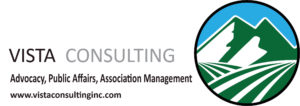
Johansen said there was a lack of data on what other sources of water could contribute to inflows of Tulare Lakebed. He said they had to go back to 1996 I think to update the data to make the amendments. Bivins asked if Johansen received data from Boswell Farms and Johansen said as Boswell is a member of the TLBWSD it’s possible but the data provided came from TLBWD. Bivins asked if Johansen knew of the water going to the Tulare Lakebed was being used beneficially. Johansen said KRWA reports on its member units and worked on the licenses based on that parameter. Bivins asked several hypothetical questions about conversations regarding beneficial use of water. He then asked if Johansen had any reason to think Provost wouldn’t be honest when preparing reports. Johansen said no reason to think Provost was anything but honest. Bivins asked how he could verify the data given by Boswell was accurate. Johansen said they depended on the TLBWSD’s data and had no reason not to do so.
Bivins then started a course of technical questions regarding how the license report methodology by both the State Board and the KRWA work. A map by Boswell was posted and Bivins questioned Johansen about how he verified the water was used and stored. Johansen said he relied on the TLBWSD. He said he didn’t have a way to confirm those figures for data 15-20 years old. Somewhere in the midst of this Bivin thanked Mr. Boswell, he meant Mr. Johansen. He apologized and that was the end of Bivins questions.
Kyle Wooldridge, State Board, asked about the revised KRWA report data. He asked Johansen about why net North Fork floodwater is deducted from Natural flow available for direct diversion. If I understood Johansen said this is water that wasn’t used by member agencies. Wooldridge asked if this means it’s not available. Johansen said this is water that was available if the agencies could have used it. Wooldridge asked if it was used and Johansen said there were late spring rains in 2019 that impacted the farm fields’ ability to take on water. Wooldridge continued to question Johansen on specific calculations on an Excel spreadsheet’s implications for the licensing requirements being amended as a result of Semitropic’s complaint. I confess this part if difficult for me to relay to you dear readers. The spreadsheet has more than 450 rows and 70 columns. I don’t have access to it and even if I did it divides six separate licenses and six separate applications. I’m not an attorney or an engineer or a CPA or a rocket surgeon or even play one on television – but generally I can type fast enough to keep up. I believe what was the gist of this line of questioning by Wooldridge was the priority of the licensing and the beneficial use of the water.
Johansen said there were late spring rains in 2019 that impacted the farm fields’ ability to take on water. Wooldridge continued to question Johansen on specific calculations on an Excel spreadsheet’s implications for the licensing requirements being amended as a result of Semitropic’s complaint. I confess this part if difficult for me to relay to you dear readers. The spreadsheet has more than 450 rows and 70 columns. I don’t have access to it and even if I did it divides six separate licenses and six separate applications. I’m not an attorney or an engineer or a CPA or a rocket surgeon or even play one on television – but generally I can type fast enough to keep up. I believe what was the gist of this line of questioning by Wooldridge was the priority of the licensing and the beneficial use of the water.
Kuenzi had a couple of questions and Johansen said under the revised reports there were changes in how the water was allocated. The water was put in the bucket to align with the priorities outlined in the complaint. Kuenzi asked why the totals between the historical reports and the revised reports were different. Johansen said the calculation for how water stored less than 30-days would be figured into the totals. He said that could have caused a double count on some of the water. The dreaded Excel sheet came back and showed all the different point sources of surface water entering the Tulare Lakebed; from the Empire Weir #2 to the Kern River and all things in between. Before Herr redirects Johansen’s testimony we were mercifully given a short break to allow the blood to flow back from my posterior to my head.
Part III of Part II
Look, I get it. Throughout this report I’ve griped or at least hinted about how tough it is to sit here and type all day. I’ve been a carpenter and cowboyed in the heat of the day. I’ve worked at numbingly repetitive assembly line jobs and driven delivery truck through tough neighborhoods. I wouldn’t trade the privilege of writing about water for any of those jobs, except if cowboying paid better. But it doesn’t and I’m too old to get bucked off and have to walk back to the corrals for a couple of miles. So please don’t think I’m not grateful. I understand this job is a blessing.
At 3:21pm Herr asked Johansen about where he got his data from about the Tulare Lakebed. Johansen said he believes the info was accurate and had no suspicions about the data. If he did there would have been follow up. He also said losses are calculated as part of the beneficial use totals. Herr asked if Johansen is contacted by member units as well as the KRWA and the answer was yes.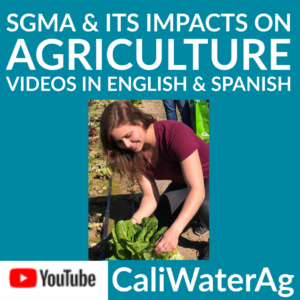
Final Witness
Herr said he wanted to call David Merritt as his last witness. O’Brien objected to Merritt’s testimony based on its relevance. If I understand Merritt has been critical of Semitropic’s plans for the Kings River water it wants and O’Brien said that would be out of the scope of this Phase 1A hearing. Herr said Merritt’s testimony could avoid the flaws in the Semitropic plan. Herr said Merritt could speak about other matters such as flood control. Kuenzi agreed to this.
I thought Herr started before Merritt was sworn in but evidently it happened and I missed the oath. Merritt is the interim manager of the KRCD and oversees all the district’s activities including the flood operations. KRCD is responsible for 140 miles of ACE levees and works closely with ACE during flood operations. O’Brien objected that this was outside the agreed testimony. Kuenzi allowed Merritt to continue but agreed to allow Semitropic an opportunity to rebuttal. Herr asked to pull up Merritt’s declaration and asked if he still considers it accurate. Merritt said yes. Merritt was allowed to continue saying KRCD works closely with ACE according to the O&M manual.
Merritt spoke about efforts to remove the invasive species along the living river which will help during highwater flows and floods. Per its agreement with ACE once there is 2,000 cfs in the South Fork KRCD has to start a flood watch patrol.
O’Brien asked if KRCD has an obligation to maintain the South Fork conveyance capacity if I understood. Merritt said there is an obligation according to the O&M manual but it isn’t spelled out how. In all his time with KRCD he’s never heard of ACE having a problem. The maximum capacity of the South Fork is dependent on levee conditions. Merritt estimated the current conveyance capacity of the South Fork is 1,400 cfs. O’Brien asked Merritt if he any disagreement with engineer Joe Countryman’s testimony yesterday. Merritt said yes that he believed Countryman didn’t look at the data in whole and underestimated the channel capacity. Outside of flood operations he had no problems with Countryman’s testimony.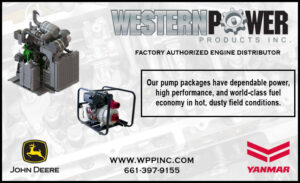
Nick Jacobs, attorney for the Upper Districts asked Merritt about the water model KRCD has, that Taghavi used in this testimony yesterday. Merritt is aware of the model but doesn’t believe the model is complete. Merritt was also aware of calibration issues and KRCD would not use the model today. It also owns the intellectual property rights. Jacobs asked if Dr. Ali Taghavi, who gave testimony yesterday had permission to use the model. Merritt said he knows Semitropic has asked for the model. Jacobs moved to strike Taghavi’s testimony as far as the model is concerned. He said there’s no calibration and it’s not completed. Kuenzi said she’d take that under advisement.
O’Brien said this is late in the game to attack the model. He asked Merritt if he had ever prepared a model or if he was a hydrological modeler. Merritt said he wouldn’t consider himself a modeler but he has participated in critiques of models along with engineers. Merritt was asked if KRCD uses the model or if it is being upgraded. Merritt said there was an attempt to upgrade the model but that effort has been shelved. O’Brien asked if that shelving had anything to do with today’s proceedings and the answer was no.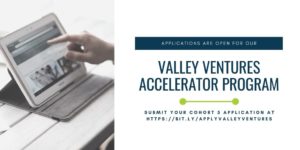
Kuenzi asked why the ACE target for flood watch patrols is 2,000 cfs but the South Fork capacity is 1,400 cfs? I was wondering that too. Turns out 2,000 cfs is what ACE wants and that’s what’s in the O&M manual. I guess the manual needs an updating.
Herr redirected asking Merritt if he uses models for work. The answer is yes, models are used to help determine new projects’ feasibility. The model under question was developed by a company named Rime and Herr asked if there is some criticism that prevents KRCD from using the Rime model. O’Brien said Herr is trying to use hearsay. Kuenzi allowed Herr to ask why KRCD isn’t using the Rime model. Merritt said there are calibration issues and it doesn’t look at the Kings River area in a holistic manner. He added he can’t just let anyone use the Rime model as there is confidential information on it. Merritt isn’t aware of anyone using the Rime model successfully. Jacobs said it would be counter to the truth to use testimony from a model that is flawed. O’Brien said Jacobs has had ample time to raise this issue before the hearing and didn’t do so. That was all the questions.
Kuenzi said she won’t rule right now on the motion to strike Taghavi’s testimony. She asked Jacobs how much of Taghavi’s testimony he feels should be stricken from the record. He responded by saying he’d like to review the testimony and sort out what was dependent on the model. Herr added he’d like KRWA to join in on this objection and ask that Dr. Taghavi be subject to questioning how he came to trust the Rime model. O’Brien said it depends on how much Taghavi’s testimony was dependent on the model or the Watermaster reports. O’Brien asked to allow filing another motion on Taghavi’s testimony. Kuenzi agreed to allow a five paged, double spaced motion by close of business this Tuesday. Kuenzi allowed for Jacobs and Herr to respond to O’Brien’s written objection and they have until next Friday close of business to respond. With that Merritt was let off the hook. Herr said the KRWA case in chief testimony was closed.
Next Steps
Kuenzi said the next step is to hear from the Upper River Districts’ case in chief. Jacobs said Hess testified this morning and Mr. Bonsinmore (sp?) is the only other witness. Kiel said TLBWD had Mark Unruh and Jeff Myer. Attorney Russel McGlothlin, Terra Nova Ranch will present Don Cameron and someone else whose name I didn’t catch. O’Brien objected saying Cameron owns Terra Nova Farms that uses Kings River water for recharge on his property and the McMullin Recharge Project. O’Brien said he doesn’t see these as Phase 1A issues. McGlothlin said the testimony will show there is a project on the North Fork that is underway and shows how flood control and recharge can work together. O’Brien said Semitropic hasn’t stated the Terra Nova project is a problem but he believes the question is the Kings River water going to the San Joaquin limits its use in Kings and Tulare Counties. Herr asked after the case and chiefs’ testimony is finished will there be rebuttal. It will proceed in the same order as the case in chiefs.
question is the Kings River water going to the San Joaquin limits its use in Kings and Tulare Counties. Herr asked after the case and chiefs’ testimony is finished will there be rebuttal. It will proceed in the same order as the case in chiefs.
Kuenzi thanked everyone for a good day’s work and adjourned at 4:22pm. If you want to follow along for day three the YouTube link is: https://www.youtube.com/channel/UCM-gmipRyd7Nw-g8l-C7Nig/videos?view=2&live_view=502&view_as=subscriber good luck.
DISCLAIMER OF RESPONSIBILITY; Waterwrights strives to provide its clients with the most complete, up-to-date, and accurate information available. Nevertheless, Waterwrights does not serve as a guarantor of the accuracy or completeness of the information provided, and specifically disclaims any and all responsibility for information that is not accurate, up-to-date, or complete. Waterwrights’ clients therefore rely on the accuracy, completeness and timeliness of information from Waterwrights entirely at their own risk. The opinions expressed in this report are those of the author and do not represent any advertisers or third parties.
ALL RIGHTS RESERVED. Copyright 2021 by WaterWrights.net/DAW






























